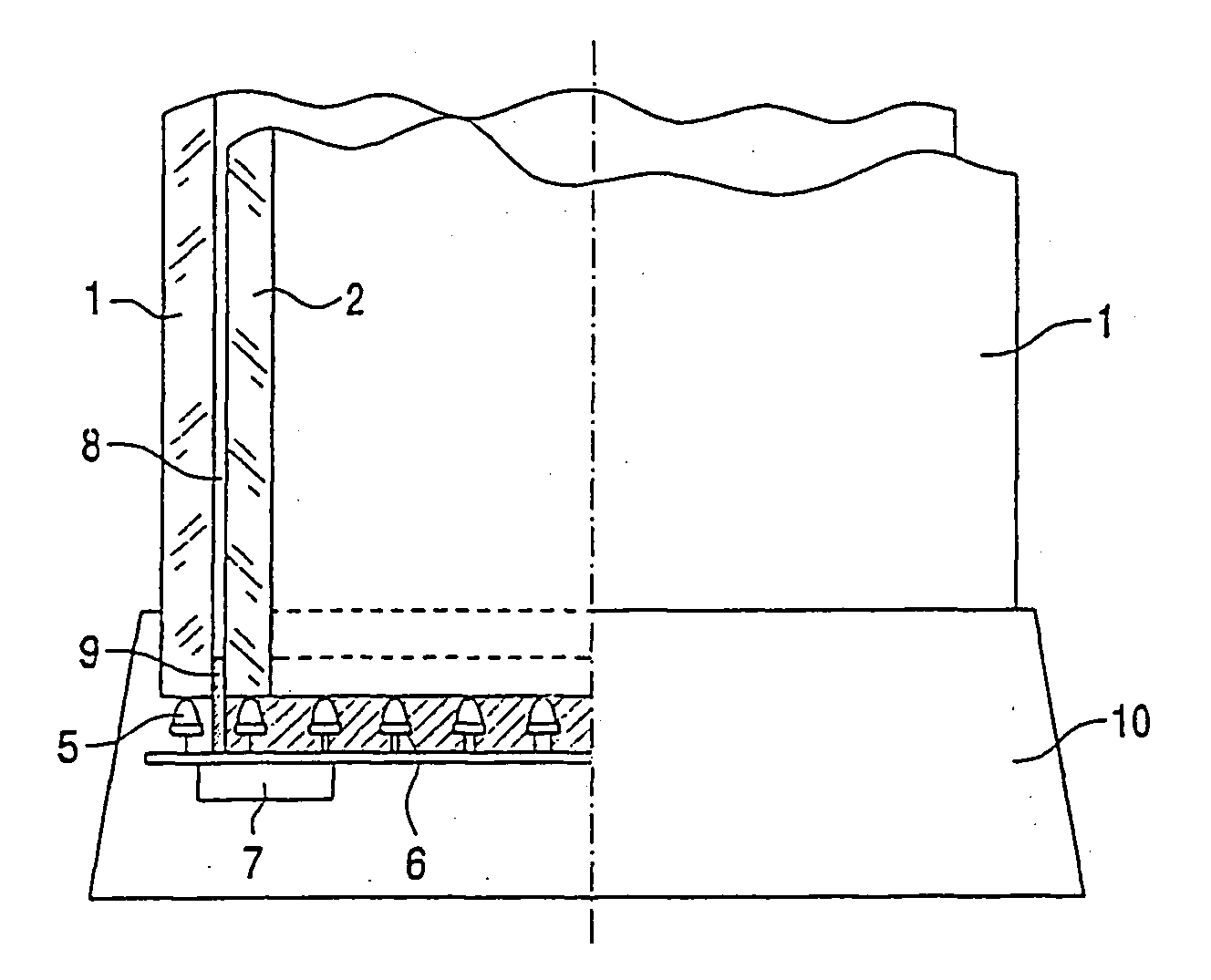Data display device
a technology of data display and display device, which is applied in the direction of instrumentation, lighting and heating apparatus, planar/plate-like light guides, etc., can solve the problems of apparent conflict between light conductivity laws and approaches, and use of luminescent light sources, so as to increase the volume of information, the effect of uniform exposur
- Summary
- Abstract
- Description
- Claims
- Application Information
AI Technical Summary
Benefits of technology
Problems solved by technology
Method used
Image
Examples
Embodiment Construction
[0048]FIG. 1 is a design of the data display device comprising at least two light-guide elements 1, 2 having polished surfaces. For an optical material, acrylic “organic” glass may be used. Engraved on the wide surface of the light-guide element 1, on one or two sides, there are provided engraved diffuse-reflective characters (signs, litters, pictures) 3 to form in the aggregate an information unit, e.g. a logotype of a trade-mark. The wide polished surface of the light-guide element 2 is also furnished with diffuse-reflective characters located in the zone 4. Structurally, the device in FIGS. 1 and 2 is provided with light-guide plates 1 and 2 of a rectangular shape, with point radiators being mounted on their narrow polished sides to illuminate the characters 3 while the zone 4 being furnished with characters on the plates 1 and 2, respectively. As is seen in FIGS. 1 and 2, the point radiators are provided with electric power-supply units to choose modes of ‘on-off’ action of the ...
PUM
 Login to View More
Login to View More Abstract
Description
Claims
Application Information
 Login to View More
Login to View More - R&D
- Intellectual Property
- Life Sciences
- Materials
- Tech Scout
- Unparalleled Data Quality
- Higher Quality Content
- 60% Fewer Hallucinations
Browse by: Latest US Patents, China's latest patents, Technical Efficacy Thesaurus, Application Domain, Technology Topic, Popular Technical Reports.
© 2025 PatSnap. All rights reserved.Legal|Privacy policy|Modern Slavery Act Transparency Statement|Sitemap|About US| Contact US: help@patsnap.com



